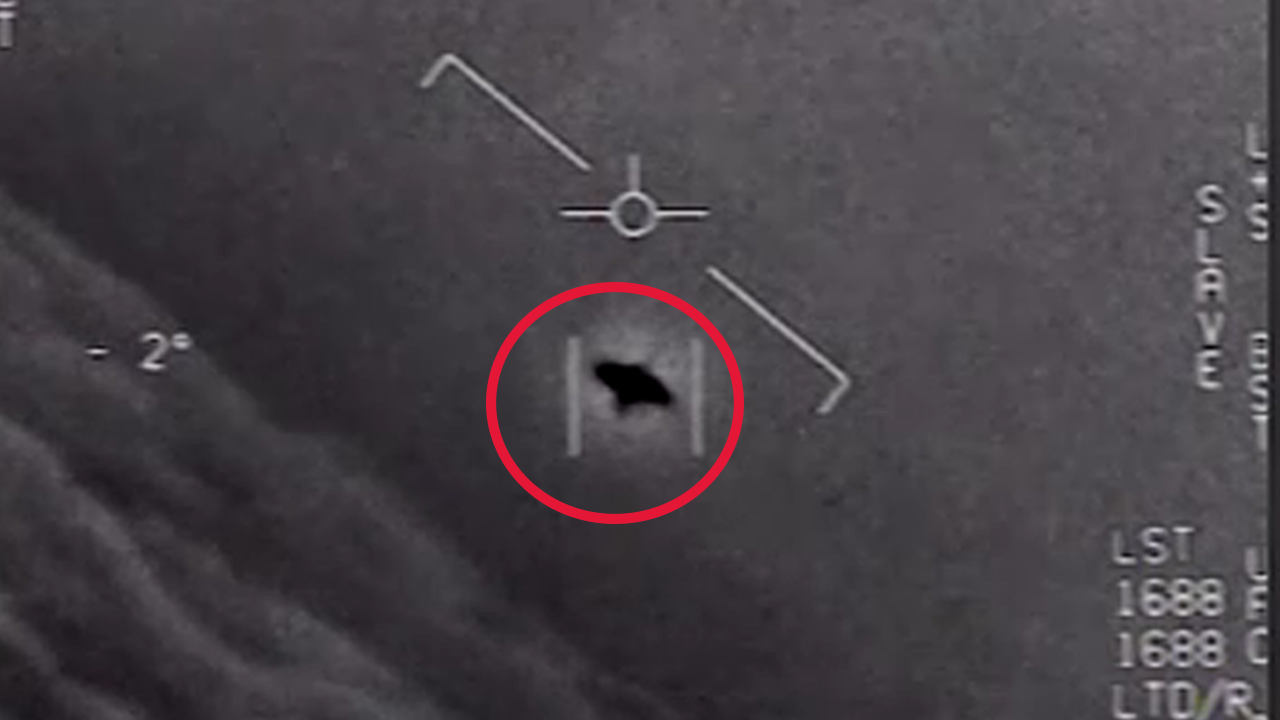
Multiple former Navy pilots and the one-time head of the Pentagon’s since-abandoned Advanced Aerospace Threat Identification Program (AATIP) appeared on the show to share accounts of their personal encounters and their broader thoughts on apparent flying objects that seem to defy our understanding of the physics of aerospace.
Navy pilots describe encounters with UFOswww.youtube.com
While they didn’t reveal anything that enthusiasts on the topic didn’t already know, the consensus among them seems to be that we, as a society, have been overlooking something very real, mysterious, and potentially dangerous. The UFOs in question move like no known aircraft — several times faster than any jet and able to reverse directions on a dime.
The way they move is almost unfathomable. It’s far beyond the theoretical limits of what a pilot could even survive — a human pilot, anyway.
As seems to happen every few months of late — when a new video of a flying “tic tac” comes out, or when a former Israeli “Space Security Chief” claims that the US government is in contact with a “galactic federation” — social media lit up with talk of aliens. By Monday morning, “UFOs” was trending on Twitter, with the trend summarized in part by the phrase “a debate about the existence of UFOs reignites.”
But that’s not right at all. There is no debate as to whether UFOs exist — we know for a fact that they do. The only debate is over what they are.
UFOs and UAPs
In fairness to Twitter, for a long time the official position on the topic of “Unidentified Flying Objects” was silence, leading to conspiracy theories about “men in black” covering up the truth. Neither the military nor the government of the United States was willing to acknowledge that there was anything flying around that we didn’t fully understand. Strange, inexplicable objects moving through the sky were the stuff of crackpot theories and hushed pilot stories.
But that level of secrecy is no longer tenable. Since 2017, when Christopher Mellon, a former high-level defense department official, shared declassified videos of UFOs — more officially referred to as “Unidentified Aerial Phenomena” (UAPs) — with The New York Times, it has become impossible to deny that pilots commonly encounter things that we can’t yet explain.
Two former pilots speaking with 60 Minutes described seeing an object that seemed to be engaging with a patch of roiling ocean. As they watched, it suddenly changed directions, rose up to meet them, then vanished — only to reappear on radar moments later…at a distance of 60 miles.
While that’s a particularly dramatic example, Lieutenant Ryan Graves claims encounters with UAPs of various descriptions occur on a daily basis along the Atlantic coast of the US. Whether that’s entirely accurate, it’s common for pilots to see strange things around them in the sky, sometimes seeming to perform impossible aerial maneuvers.
On their face, these stories seem far more credible than your average claim of alien abduction. But without clear evidence in the form of videos and various forms of detection, it would be easy to dismiss these experiences as some form of illusion.
After all, atmospheric refraction has been known to cause the sun to appear in the middle of the polar night, and rare air currents can transform a cloud into the shape of a flying saucer. Certain frequencies of vibration — perhaps produced by jet engines or the rush of air past a fuselage — can vibrate the fluid inside an eyeball, causing people to see strange phantoms at the edges of their vision, and the movement of flight can be so disorienting that pilots are commonly made to feel that down is up.
There is so much that is strange about moving at hundreds of miles an hour through the high atmosphere — so much that is unlike the everyday, earthbound human experience — that it would almost be shocking if pilots didn’t have some crazy stories. But when those crazy stories are backed up by video and, even more significantly, by radar and infrared detection, it’s past time to take them seriously.
Aliens or Enemies?
But what the hell could possibly move the way these things do? The answer — for a lot of people — is aliens. The technology to defy everything we know about the physics of aircraft is necessarily so far beyond what we’re capable of that the very concept of UFOs has long been synonymous with alien spacecraft.
As Luis Elizondo, the former head of the Pentagon’s AATIP program, put it: “Imagine a technology that can do 6-700 g-forces, that can fly at 13,000 miles per hour, that can evade radar, and that can fly through air, and water, and possibly space. And oh, by the way has no obvious signs of propulsion, no wings, no control surfaces, and yet still can defy the natural effects of earth’s gravity — that’s precisely what we’re seeing.”
But wait, weren’t we just using radar as proof that these objects exist? Now they can evade radar?
What Radar Jamming Has to Do with UFOswww.youtube.com
While some of the objects pilots have observed are either corroborated or only detectable at all by the most advanced forms of radar detection, others have only been observed visually. So…some aliens can evade radar and others can’t? Is it the difference between an alien in a Nissan and an alien in a Maclaren?
Then again, not everyone involved agrees that we should be taking the possibility of aliens seriously. In the opinion of former Navy pilot Lieutenant Ryan Graves — who witnessed one of these objects himself off the Atlantic coast — “the highest probability is that it’s a threat observation program.” And he’s not counting out adversarial nations like Russia and China.
Could it be that other nations, or perhaps our military, have developed secret technology so advanced that we can’t even understand what we’re looking at? That the frameworks of ordinary aerospace technology don’t even apply?
Maybe the Pentagon itself is concealing a breakthrough on the level of the Manhattan Project and hiding the expenditures in the wildly inflated budget of the F-35. Or maybe, if all you have is a hammer, everything looks like a nail.
Modern Myths
In other words, maybe pilots and military officials are not the people best equipped to assess these phenomena. By default, they tend to look at the little information we have about UAPs from a military or an aviation perspective.
To some extent, that makes sense. The only things we know of that maneuver through the sky at high speeds are military aircraft. But then again, is maneuver even the right word? How do we know these phenomena are moving this way on purpose?
Ancient peoples saw flashes of lighting and observed the crack of thunder and ascribed intention to them. Gods living in the sky were angry and were taking their anger out on the Earth, hurling destruction down at the world.
Now we have a better explanation: the buildup of static charge within a cloud, discharging into the Earth, and converting the air along its path into plasma. Whether or not we as individuals really understand the details of that process, we accept that this is the science of lightning, and we feel smug and smirk at stories about Zeus and Thor.
But what about the “flames of hell” that tore apart a church in the English countryside in 1683? Witnesses described a massive ball of fire entering the church in the midst of a thunderstorm, destroying pews and sending stones flying, before splitting in two, one half bursting through the window while the other disappeared inside the church.
Is there a scientific explanation for that? Well, maybe…
Ball Lightning
Ball lightning is a rare and little-understood phenomena in which “lightning” seems to form a ball, that can be tiny or huge, and have been observed entering homes, moving freely through windows, and either dissipating harmlessly or exploding violently. In 2014, ball lightning was even observed inside the cabin of a passenger plane in the UK just before lightning struck the plane’s nose.
Generally occurring during electrical storms, there are a lot of theories of what ball lightning might be. But it’s such a rare occurrence that scientific observation has been all but impossible.
In the early 2000s one lab demonstrated a possible explanation for ball lightning as a spinning ring of plasma contained by its magnetic field. But then in 2014 Chinese researchers managed to get a spectrograph reading of what they think was ball lightning and found that it was composed of vaporized silicon, iron, and calcium — basically dirt turned into a glowing, high-energy ball of gas by a lightning strike.
Ball Lightning: Weather’s Biggest Mystery | Answers With Joe www.youtube.com
To put it simply, we really don’t know what ball lightning is. There are a number of theories, but nothing resembling a scientific consensus, and it’s entirely possible that the term ball lightning could refer to multiple phenomena.
Because we don’t know what it is, there’s room for wild speculation from “flames of hell” to gaseous dirt, or hell, why not aliens — weird, spherical, exploding aliens.
The Endless Variety of Uncertainty
There’s such a tremendous amount about the universe that we don’t know that, if we want to, we could find evidence of aliens all around us. And with the vastness of space that surrounds our little solar system, it would be silly to assume that there aren’t other civilizations out there somewhere.
But that uncertainty cuts both ways. Because there’s so much we don’t know — how rare life is, how difficult to achieve interstellar travel compared to other technologies, etc. — it’s impossible to say whether it’s more likely that we’re being visited by aliens from distant worlds, advanced military spy drones, or time travelers from some far-flung future.
For that matter, UFOs could be humans from a utopian dimension where Al Gore was president, teenagers playing The Sims 36, or just a variety of atmospheric phenomena like ball lightning that may continue to elude our attempts to understand them for decades to come. For all we know, reality could be far stranger than we give it credit for, and it could be all of the above.
All we can be certain of is that we don’t know, which is what makes UFOs/UAPs so interesting. But jumping to the conclusion that it must be aliens is no more sensible than blaming Thor when lightning strikes.
As Luis Elizondo put it to CBS’s Bill Whitaker, “In some cases there are simple explanations for what people are witnessing, but … when you have exhausted all those what-ifs, and you’re still left with the fact that this is in our air space and it’s real, that’s when it becomes compelling, and that’s when it becomes problematic.”
Last year the Pentagon relaunched its investigation into UFOs — now renamed the UAP Task Force — and the Senate Intelligence Committee has requested that the Director of National Intelligence and the Pentagon deliver a detailed, unclassified analysis to congress by next month. Whether that analysis will provide any answers remains to be seen.















